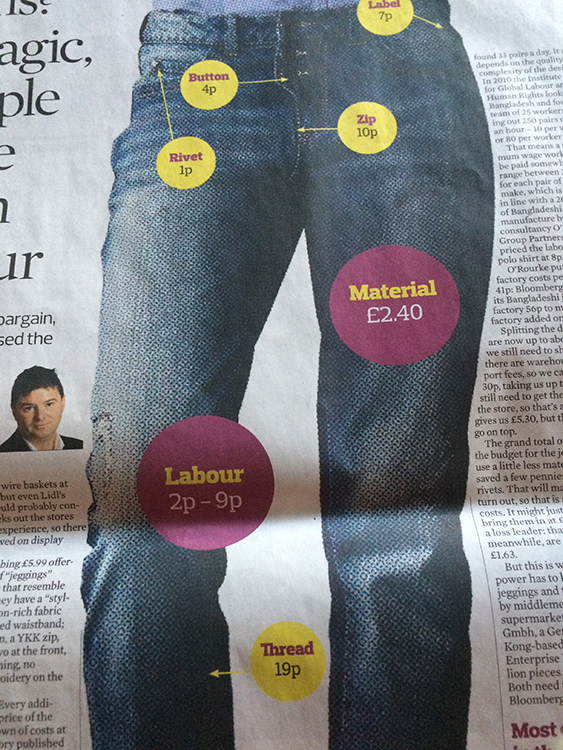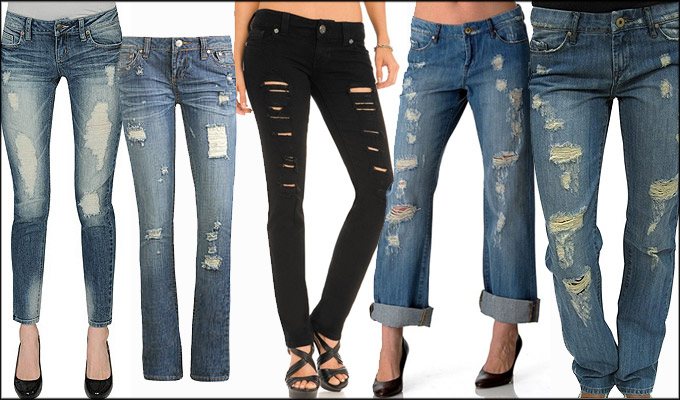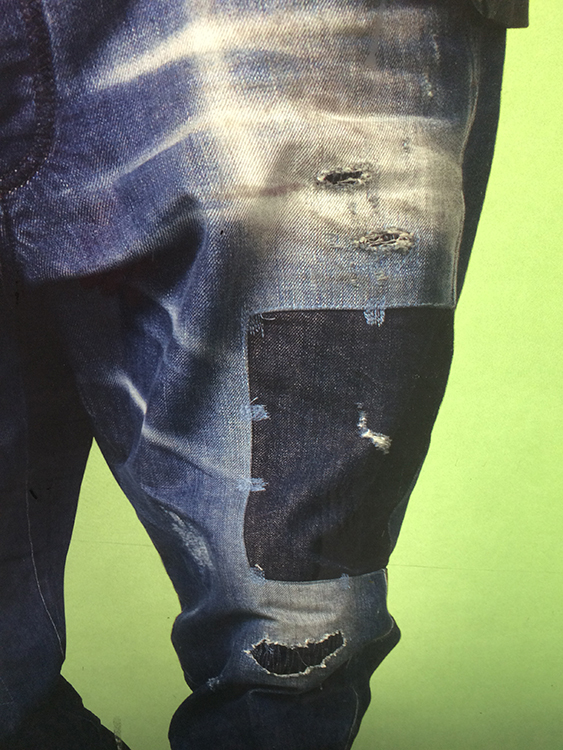Denimosity
What kind of a boyfriend (or life) do you have?
Thankfully, as the case against cheap clothing is reaching maturity, more and more consumers are becoming aware of fast fashion’s negative impact on people and planet. Documentaries such as the True Cost and high profile campaigns (and campaigners) are rapidly changing public perceptions and we are now more informed than ever.
Cheap clothing costs.
It costs environmentally and socially. It is as inefficient as it is polluting. It is rooted in the exploitation of both human and natural resources and as consumer awareness grows we begin to see an increased sense of outrage when we spot blatant cases driving this cheapness even further.
Right now it’s the lidl boyfriend jeans, at £7.99. The denim range starts at £5.99. One pair of jeans: £5.99.
Ridiculous may not be a strong enough word to describe the phenomenon, but it nevertheless is worthy of all our ridicule because for this ridiculous looking pair of jeans, like millions of other pairs of cheap jeans, the point is not just how much we are prepared to compromise in order to own them, such as the self respect of the people who made them (cheap jeans = cheap labour) and the environmental footprint they come laden with, but how stupid we are prepared to look like when we wear them.
Poorly made, poorly designed fast fashion pieces, produced in their millions, lack all individualism. In the case of denim, this lack of individualism speaks volumes.
Jeans, we live in them; they have become so ubiquitous we could call them humanity’s uniform.
They have crossed all cultural barriers and have represented our social and political attitudes, from utilitarian workwear in the early 1900s, to a symbol of the hippy peaceful protests in the 1960s, to punk. Everyone wears jeans: millionaires, refugees, celebrities and school kids.
A canvas that is the fabric of so many stories.
When I was growing up, it was Levi’s 501s or die. Nick Kamen stripped to wash them in a launderette, ripped jeans wearers were banned from Harrods and one would spend hours in a cold bath to mould them to fit perfectly. If you were an artist they would be splattered in paint, if you were a gardener they would gather earth in their turn-ups. They were never ironed, seldom washed. Quite a few people learned how to sew in the early 80s in a desperate move away from the 70s bell bottoms, to take them in at the seam and make them skinny.
We have no time for that anymore: now we want our jeans lived in even if we are not. Even if we are so boring and we do nothing at all all day but stare at our screens, our jeans have to say ‘ripped’ and ‘worn’ and ‘used’…like…what a life!
So, what kind of a ’life’ is your customer’s supposed ‘boyfriend’ having then, Lidl?
If we analyse the jeans anatomically, we can deduct that he wears his denim unbuttoned and slightly pulled down most of the times (see wrinkles at the top) and that he spends an inordinate amount of time with his trousers down, rubbing his thighs with something rough.
At one point he was mauled by a dog who bit his right leg, or perhaps he stumbled upon some sharp object (no blood of course) and either he is good at sewing, or his mum is, because he bothered to patch the rip up.
And, every single woman who buys the Lidl boyfriend jeans will have the same pattern of usage on her trousers as everyone else: the same rip (patched), the same wear (unnatural), the same wrinkles (trousers down = downright perv if you ask me).
In fact, if you take Lidl’s jeans and other pre-distressed denim from our generation, put them in a box and leave them, say, 1000 years, any future anthropologist looking at them would conclude that humans around 2016 were doing all sorts of really weird stuff, according to how they ‘wore out’ their jeans: hours rubbing bums on rough surfaces, crawling constantly, wearing trousers down instead of up, accidentally misusing acid, having violent tussles with wild animals on a regular basis à la Revenant, and most possibly suffered regular episodes of scabies in particular on shins and thighs.
Distressed denim is the symbol of fast fashion; its most perfect visualisation.
It shows how unintelligent it is, how undesigned it is. It shows how, for the sake of looking exactly like everybody else and owning cheap stuff, we are compromising on who we are as individuals and compromising on the wellbeing of our planet and the people who make our clothes.
It takes 1.800 gallons of water just to grow the cotton and produce a pair of jeans (without considering how many times they will be washed in their lifetime) and most distressing techniques have a radically negative effect not just on the fabric but on the environment and garment workers as well. Sandblasting, a technique which was widely used to achieve the worn look for well over 20 years, was eventually banned internationally as a result of its direct link with silicosis, a deadly respiratory disease.
There is no joy in owning these jeans.
They are a monument to all that has gone wrong with this industry. A monument to speed and impatience, the physical manifestation of a senseless race to the bottom with its dramatic social and environmental consequences.
Fashion Revolution encourages the alternative use of jeans, such as Mud’s leasing scheme and Nudie’s in-store repair services. We salute the companies innovating in this field: brands such as Monkee, Hiut, G-Star Raw and a handful of others who are breaking with this horrendous modern tradition by using organic and recycled materials and designing denim as what it is: a durable, versatile fabric that has had the power to capture our imagination like no other.
Let’s celebrate this miracle material as a success story, the fabric of our society, the one cloth that has had the power to become a form of political expression, and not turn it into the symbol of how we got things so spectacularly wrong.









